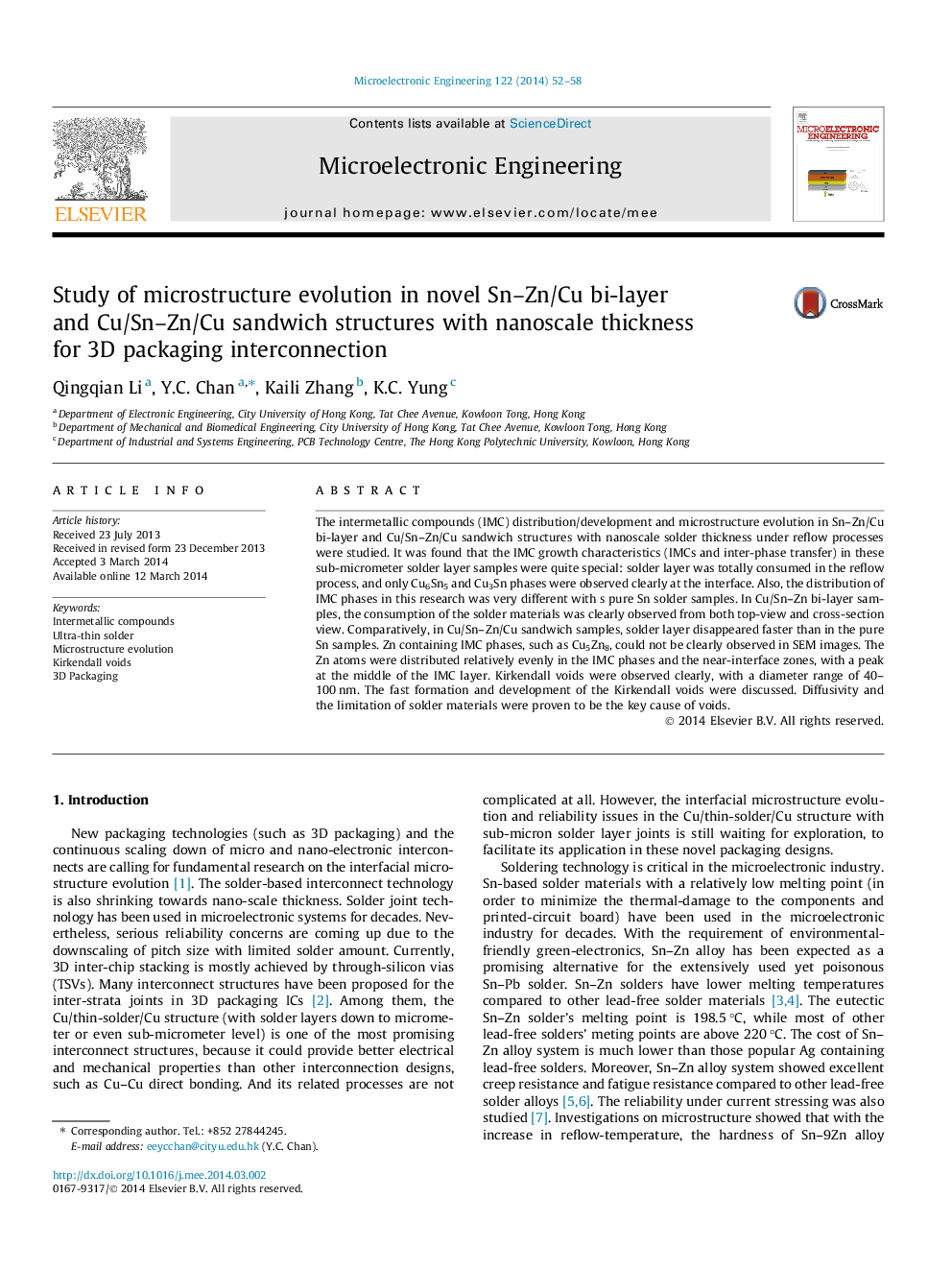| Article ID | Journal | Published Year | Pages | File Type |
|---|---|---|---|---|
| 539473 | Microelectronic Engineering | 2014 | 7 Pages |
•Soldering of sub-micron scale solder thickness Cu/Sn–Zn/Cu and Sn–Zn/Cu were studied.•The “Cu6Sn5 concumption based” Cu3Sn growth and Zn diffusion were discussed.•Fast formation of Kirkendall voids in these structures were observed and studied.
The intermetallic compounds (IMC) distribution/development and microstructure evolution in Sn–Zn/Cu bi-layer and Cu/Sn–Zn/Cu sandwich structures with nanoscale solder thickness under reflow processes were studied. It was found that the IMC growth characteristics (IMCs and inter-phase transfer) in these sub-micrometer solder layer samples were quite special: solder layer was totally consumed in the reflow process, and only Cu6Sn5 and Cu3Sn phases were observed clearly at the interface. Also, the distribution of IMC phases in this research was very different with s pure Sn solder samples. In Cu/Sn–Zn bi-layer samples, the consumption of the solder materials was clearly observed from both top-view and cross-section view. Comparatively, in Cu/Sn–Zn/Cu sandwich samples, solder layer disappeared faster than in the pure Sn samples. Zn containing IMC phases, such as Cu5Zn8, could not be clearly observed in SEM images. The Zn atoms were distributed relatively evenly in the IMC phases and the near-interface zones, with a peak at the middle of the IMC layer. Kirkendall voids were observed clearly, with a diameter range of 40–100 nm. The fast formation and development of the Kirkendall voids were discussed. Diffusivity and the limitation of solder materials were proven to be the key cause of voids.
Graphical abstractSubmicron Sn–Zn/Cu structure under reflow process was studied and the fast formation of Kirkendall voids was studied.Figure optionsDownload full-size imageDownload as PowerPoint slide
